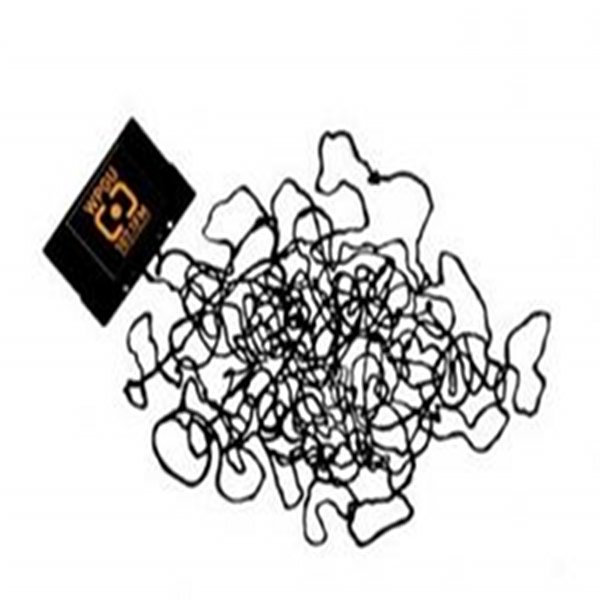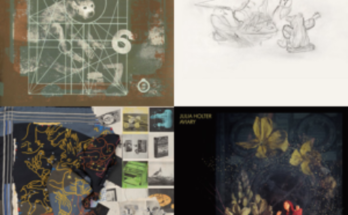Nostalgia is a big word in the music world right now, and it seems like every act has lyrics about the past in some way. Nostalgia is about a longing for a perceived better time and place of the past, and some artists go beyond lyrics to actually re-imagine the past in their aesthetic presentation. This trend has existed for probably forever, but recent years have seen a real growth in the number of artists who deliberately imitate some sound of the past in their music.
SIDE A
1. “Look For Me Baby” — Fiction Family:
The mixtape begins with one of the clearest examples of this imitative nostalgia. Fiction Family is a combination of Jon Foreman of Switchfoot and Sean Watkins of Nickelcreek, and this closer from their debut album (like the rest of the album) is a product of playing around in the studio. On this track they deliberately imitate past genres through instrumentation, lyrical structure, and their harmonization; rather than just sing about the past, they create it.
Listen Here:
2. “Honey Pie” — The Beatles:
Although obsession with the past is an increasingly current phenomenon, like many things in music, the Beatles did it too and did it marvelously. “Honey Pie,” not to be confused with “Wild Honey Pie,” is one of many tracks on the White Album where Paul evokes a sound from the past to characterize his message. Both lyrics and musical style are whimsical and feature a big-band aesthetic that would have felt as old yet culturally familiar to the Beatles’ original audience as to us.
Listen Here:
3. “Sealion” — Feist:
Unlike the previous two tracks that imitate the style of the past, here Feist reinvents the past through a cover of a traditional song. Feist reinterprets the very title of the song (“See Line Woman” to “Sealion Woman”) in an act incredibly typical of the present (in any age) remembering the past: it is not the past as it happened that matters, but rather how we remember and want to remember it. Using the same basic interaction of lead vocalist and background harmonies, Feist adds modern instrumentation and production to this song as well to further show the present’s take on the past.
Listen Here:
4. “Don’t Look Back” — She & Him:
People tend to love or hate Zooey Deschanel, but every song by her and M. Ward (performed under the name She & Him) is meant to sound like it came from the fifties. With vocal harmonies, upbeat instrumentation and simple song structure, this pop gem could have seen radio play back then.
Listen Here:
5. “Black” — Norah Jones vocals, Danger Mouse and Daniele Luppi composers:
Rome is a soundtrack for a film that didn’t exist, a product of a modern producer wanting to produce something from the era of the spaghetti western. Norah Jones perfectly evokes the past with her haunting vocals, but that’s not the true nostalgia here. Danger Mouse (one of the greatest living producers) has a knack for making things sound like they came from the past, and here he deliberately sought out an Italian composer to help him make as authentic of a sound as possible. The irony is that the spaghetti western was itself criticized for being a fake imagining of the America’s past, not even filmed in the right place; Danger Mouse has authentically recreated something inauthentic. However, ultimately this disconnect is irrelevant, because the present longs for a version of the past that may or may not be true. This is the heart of true nostalgia: a desire for a “remembered,” better past and not necessarily a real past.
Listen Here:
SIDE B
6. “Words Cannot Describe” — Mirah:
Like side A’s opener, this track is also a closing track from an album full of the product of an artist having fun in the studio. From Mirah’s debut album You Think It’s Like This But Really It’s Like This, this track has such a positive vibe to it as she sings about a romance that could be from an old movie. This track includes only a piano, flute, and her vocals, and could have been a hit in the twenties jazz scene.
Listen Here:
7. “Under Your Charms” — Josh Rouse:
Josh Rouse was born in 1972, and in the early 2000s he had a desire (a deep longing shall we say) to create an album that sounded like the year he was born. With “groovy” album artwork (with song titles on the cover and everything!) these songs lyrically explore a lot of the themes of the early seventies as well. This love song is smooth and features a simple background melody to support his vocals to create what could have been a seventies smooth jazz/pop love song.
Listen Here:
8. “Strawberry Swing” — Coldplay:
Some people prefer Frank Ocean’s cover (which he uses as the opening track on an album named Nostalgia, Ultra), but the original Coldplay track is more like a salute to the past rather than a statement on it. Chris Martin wanted a song that included the sounds of the places Coldplay had been touring, and the afro-rock video is here paired by the cute and fun stop-animation music video. Not an accurate reflection of African music, but definitely a modern reinvention of what it could have sounded like.
Listen Here:
http://www.youtube.com/watch?v=Lb9X5jMofEo
9. “Beach Comber” — Real Estate:
Like She & Him, every Real Estate song could be a tribute to the past’s sense of harmony and vocals. This opener from their debut album is just a pleasure to hear because of the upbeat sound and lyrics and that great guitar riff that runs through it.
Listen Here:
10. “Crazy” — Gnarls Barkley:
When I told my father that this song was from 2006, he didn’t believe me because it sounds so familiar and and old that it must be. Like everyone who was alive and listening in the two thousands, “Crazy” was a song that perhaps even defined the present, and Rolling Stones magazine went so far as to call it the song of the decade (and most other reviewers put it pretty close to that). Another song produced by Danger Mouse (and really, anything from Broken Bells, Dangerdoom, or any of his other projects would have fit on this mixtape), despite the heavy electronic influences, the style of singing and rhythm is old, and perhaps the widespread popularity and great importance of this song that represents this imitative nostalgia is why so many artists since then have been singing about nostalgia.
Listen Here:
Final Note: I’ve been making Monday Mixers for a while now, and ever since the beginning I’ve included a mark of where side A and B are for a couple reasons, but one of them is this same kind of nostalgia. Growing up I preferred tapes to cds on my boom box (that was a foot away from my bed and was always playing something), and I grew up with distinct opinions of the qualities of each side of an album. So in addition to talking about nostalgia, I’ve been including it in the mixtapes I make for both WPGU 107.1 and just friends in general for a while now. Even though it’s rarely thought of in the current music scene (although it has seen resurgence with the vinyl revival), it’s an element of a musical past that I imitate in a deep longing for that past.





